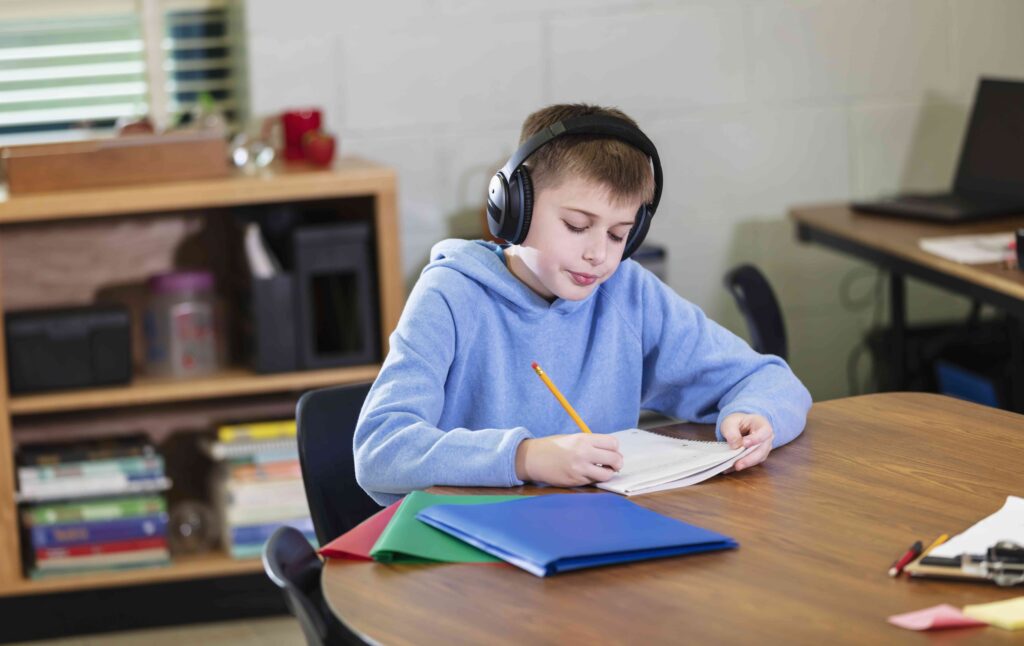:max_bytes(150000):strip_icc():format(jpeg)/Health-GettyImages-1482447246-eb822d003297460ba155670a598c4446.jpg)
If you have a sensory processing disorder (SPD), you may over- or under-respond to sensory experiences—to the point that it disrupts daily life. SPD commonly occurs among children with autism spectrum disorder (ASD), as well as other developmental conditions that affect their ability to respond to sensory input.
SPD was first introduced in the 1970s by an occupational therapist and psychologist, Anna Jean Ayres. It’s not an official diagnosis in the Diagnostic and Statistical Manual of Mental Disorders (DSM-5-TR), the guide used to diagnose mental health conditions.
Estimates suggest that approximately 5-16% of children in the United States experience SPD, making it a common condition.
The types of SPD differ based on how children respond to senses in their environment. Here are the most common types.
Sensory Over-Responsivity (SOR)
Children who exhibit sensory over-responsivity (SOR) may respond more intensely to sensory experiences. They may have challenges with different noises, smells, bright lights, textures, or even specific food groups. Children with SOR often withdraw from social situations to avoid too much sensory input.
Sensory Under-Responsivity (SUR)
In direct contrast to children with SOR, children with sensory under-responsivity (SUR) are less likely than typically developing children to respond to stimuli in their environment. They may not react as strongly or even seem bored. Parents may notice that children with SUR often put objects in their mouths.
Sensory Craving (SC)
Children who are sensory craving (SC) have reduced boundaries or personal space compared to typically developing children. They often crash into, move, or touch objects and may appear clumsy.
Children with SPD may be sensitive to loud noises, bright lights, or strong smells, or they may not respond to their name being called or notice temperature changes. If your child has SPD, they may cover their ears, rock back and forth, or close their eyes.
People with SPD may find it difficult to control their attention and communicate with others. Many children may experience emotional meltdowns. This can cause challenges in day-to-day family life and create stress for parents.
Children with sensory processing disorders may experience health issues, such as gastrointestinal conditions and sleeping problems. They also may have eating issues, particularly those that relate to food pickiness.
SPD may be caused by disruptions to fetal and infant brain development, prenatally and immediately following birth. The fetus’s nervous system learns to respond to sensory experiences during pregnancy.
When a baby is born prematurely, the time that fetal brain development occurs in the womb is shortened. This reduces the structure of the brain that controls this sensory response system. Babies who are born at low birth weight can experience the same challenges due to reduced brain volume.
Other potential causes of SPD include:
- Genetics, meaning that it may pass through families
- Prenatal exposure to medications or stimulants
- Complicated pregnancy or multiple pregnancy
- Birth by C-section
- Emergency birth or surgery immediately after birth
Although SPD is common, occurring among approximately one in every six children, children with other developmental conditions may be more likely to experience SPD. Among children who are autistic, children born prematurely, and children with fetal alcohol syndrome or Down syndrome, the prevalence rises to around 80-100%.
SPD is typically diagnosed by a mental health or medical professional using information from caregiver reports. Parents, caregivers, and teachers who suspect a child has SPD may fill in information about the child’s day-to-day behavior, focusing on their verbal and cognitive abilities.
This is beneficial because it can encapsulate changes in the child’s behavior beyond the time it takes to complete the assessment. However, it’s limited to clinical observation of the child’s behavior. Functional magnetic resonance imaging (fMRI) and other imaging may be used to research brain changes, but these tests aren’t standard tools for diagnosis.
The diagnosis of SPD is controversial and complicated. The American Academy of Pediatrics and other experts have recommended that SPD should not be an official diagnosis. Children may outgrow SPD, meaning a diagnosis may do more harm than good. Alternatively, diagnosing children with SPD rather than autism may mean the child doesn’t receive the resources they need.
Treatment for SPD focuses on supporting the child’s development of sensory processing. Occupational therapy engages with a child’s specific sensory needs and helps them develop methods for responding to the stimuli in their environment. The therapist will work with the family to identify their child’s needs and develop a treatment plan around those needs.
This may include equipment like trampolines, climbing walls, weighted vests, or lycra swings. The occupational therapist may also use activities that engage the child in their sensory needs, such as putting their hands in shaving cream. The goal is for the child to develop skills that help them every day.
New research suggests brain stimulation may help support brain regulation in children with SPD. Other research has focused on virtual reality (VR) in helping children with SPD learn how to respond to stimuli using unique scenarios.
Supportive Techniques
If your child has SPD, you can try specific techniques to limit meltdowns and provide support. When you notice that your child is beginning to become overwhelmed, you can:
- Speak to them with simple, concrete language
- Speak softly and calmly
- Anticipate what might trigger sensory overload and mitigate their exposure to that trigger
- Provide your child with noise-cancelling headphones or sunglasses if they have sound or light sensitivities
- Tell your child stories with first-person language (“We will do this”) to prepare them for potentially triggering social situations
There is a significant overlap between SPD and other neurodevelopmental disorders that commonly affect children.
Approximately nine in 10 children with ASD and more than half of children with attention-deficit/hyperactivity disorder (ADHD) also experience SPD.
Research suggests children with disruptive mood dysregulation disorder (DMDD) can also experience SPD at increased rates. They may be more likely to exhibit behaviors that avoid sensation. Treatment for both conditions provides children with the care they need.
Children with anxiety and obsessive-compulsive disorder (OCD) may also experience sensory processing challenges as well. More research is needed to identify the connections between SPD, anxiety, and OCD.
Parenting a child with SPD may be challenging, and those caring for a child with SPD may find comfort in seeking social support.
Due to the prevalence of the condition, connecting with other parents of children with SPD online, through support groups, or at school may help parents cope.
Promising new therapeutic options, such as brain stimulation and virtual reality devices, may make treatment more effective for children and adults with SPD.













